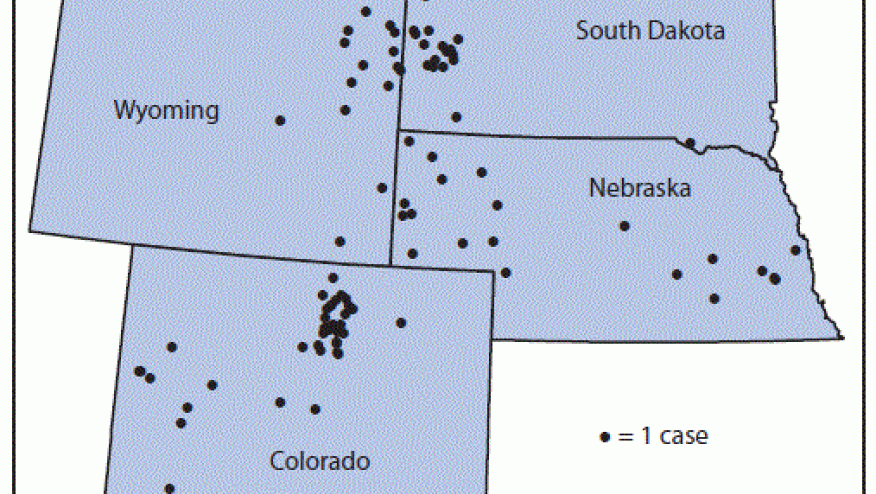CDC Reports Increases in Tularemia Save

The Centers for Disease Control and Prevention (CDC) has reported a sharp rise in tularemia, especially in Colorado, South Dakota, Wyoming, and Nebraska. As of 9/30/15 a total of 100 cases have been reported, which is up from an annual average of 20 cases seen in these 4 states seen between 2004 to 2014. (Citation source http://buff.ly/1Z4y6jQ)
CDC states approximately 125 cases have been reported annually in the United States during the last two decades (2). As of September 30, a total of 100 tularemia cases were reported in 2015 among residents of Colorado (n=43), Nebraska (21), South Dakota (20), and Wyoming (16). Overall, 48 persons were hospitalized, and one death was reported.
Tularemia is a rare, serious disease caused by a gram-negative coccobacillus, Francisella tularensis, which infects humans and animals in the Northern Hemisphere.Tularemia can be transmitted to humans by direct contact with infected animals (e.g., rabbits or cats); ingestion of contaminated food, water, or soil; inhalation from aerosolization (e.g., landscaping, mowing over voles, hares, and rodents, or other farming activities); or arthropod bites (e.g., ticks or deer flies).
Symptoms may include fever and chills with muscle and joint pain (typhoidal), cough or difficulty breathing (pneumonic), swollen lymph nodes with or without skin lesions (ulceroglandular or glandular), conjunctivitis (oculoglandular), pharyngitis (oropharyngeal), or abdominal pain with vomiting and diarrhea (intestinal). Symptoms typically begin within 3–5 days of exposure, but can take up to 14 days to appear. Case fatality rates range from 2%–24%, depending on the strain.










If you are a health practitioner, you may Login/Register to comment.
Due to the nature of these comment forums, only health practitioners are allowed to comment at this time.